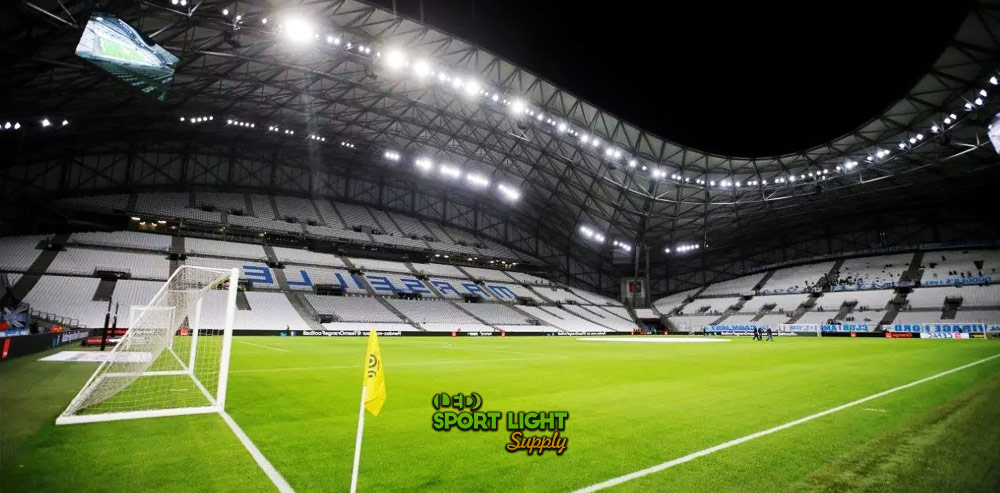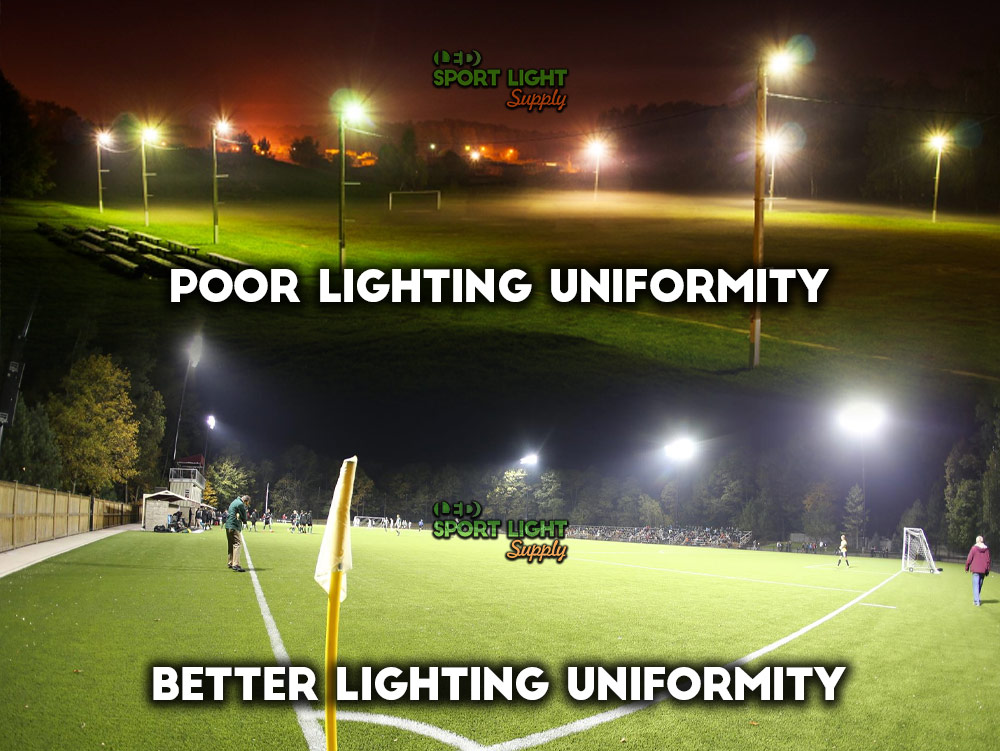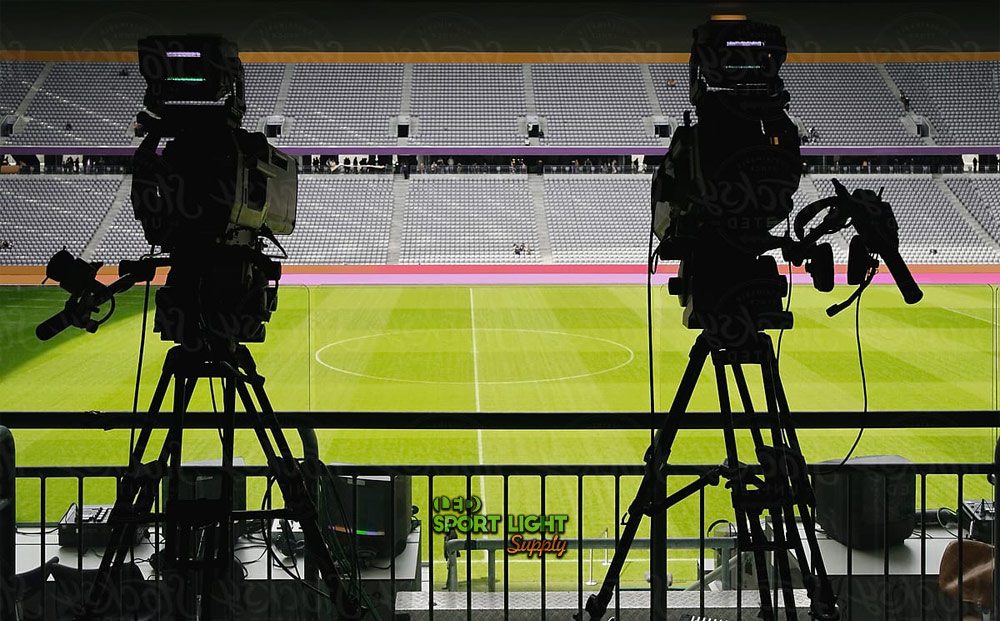The Union of European Football Associations (UEFA) is actively advocating for stringent standards regarding field lighting. Known as the ‘pitch’, these new lighting levels are carefully regulated to accommodate television broadcasting. As 4K HDTV becomes increasingly prevalent and 8K technology promises even higher resolution, UEFA’s lighting requirements are designed to meet these ultra-high-definition standards. This shift in lighting standards has significant implications for sports lighting, potentially influencing how lighting levels are adjusted for other major leagues such as the NFL or FIFA.
Table of Contents
ToggleSports Lighting Performance Standards
Horizontal Illuminance Standard
Under the new lighting conditions, field light tests are conducted to assess the lighting levels across a soccer pitch. This process involves dividing the field, or pitch, into a grid of 96 points, based on a standard field size of 68 meters by 105 meters (223 feet by 344 feet). The horizontal illuminance test is performed using a light meter positioned one meter above the pitch surface and facing upward. Measurements are taken at each grid point to determine the specific amount of light received. These measurements are crucial for establishing the required Lux value and ensuring compliance with regulatory standards. The grid-based approach allows for precise assessment of light distribution and uniformity across the entire pitch.

Vertical Illuminance Standard
The vertical illuminance test evaluates lighting from four distinct directions relative to the pitch. Measurements are taken from a height of one meter above the pitch, with the light meter positioned perpendicular to the direction of the light source. This test involves recording light levels at 0, 90, 180, and 270 degrees around the pitch. The measurements are repeated at the 96 grid points across the pitch. The goal is to achieve a uniform light distribution, with each reading needing to meet a light uniformity average of plus or minus 4 across the four directions. This standard ensures that light is evenly distributed and minimizes shadows and glare.
Lighting Uniformity Requirement
Lighting uniformity is assessed using two key measurements to evaluate the overall light distribution on the pitch. The first measurement, U1, represents the light levels that spectators, players, or cameras experience. It reflects the range of light intensity from minimum to maximum across the pitch, as determined by illuminance testing. U1 provides an indicator of visual performance and is crucial for ensuring a consistent viewing experience.
The second measurement, U2, assesses the minimum light level required for visual comfort and effective performance. U2 is related to the Color Rendering Index (CRI) and lighting design comfort, ensuring that the pitch and players are adequately visible under various lighting conditions.

Color Temperature
With the rapid advancements in television technology, color temperature has become increasingly important. Lumens play a significant role in determining the color temperature of stadium lights. For soccer pitches, the typical color temperature ranges between 4200K and 6200K, depending on the size of the stadium or arena. Stadium lights must provide consistent illumination even during the day to ensure smooth transitions from daylight to nighttime conditions. This requirement ensures that television cameras can capture clear and consistent images regardless of the time of day.
TLCI Standard
The Color Rendering Index (CRI) has limitations when it comes to newer ultra-high-definition (UHD) cameras, such as those used for 4K and 8K broadcasts. To address these limitations, the Television Lighting Consistency Index (TLCI) is used. The TLCI is a more accurate measure for evaluating lighting quality in relation to UHD cameras. Although it is not yet an internationally recognized standard for soccer stadium lighting, it is highly regarded by the European Broadcasting Union (EBU), which frequently covers FIFA championships and other major events.
The TLCI is measured on a scale from 0 to 100, with higher numbers indicating better lighting quality. The index is divided into five categories, ranging from poor to excellent, providing a detailed assessment of how well the lighting supports camera performance and image quality.
Flicker Factors
Flicker in sports lighting can create challenges for television broadcasts, particularly in slow-motion replays. Traditional lighting sources like high-intensity discharge (HID), metal halide, and high-pressure sodium lamps, common in older stadiums, are prone to flicker that becomes noticeable when viewed through high-speed cameras capturing 300 frames per second. This flicker can detract from the quality of slow-motion footage.
In contrast, modern LED sports lighting systems are designed to eliminate flicker issues, even at high resolutions such as 4K or 8K. LEDs offer stable light output with no visible flicker, making them ideal for high-speed slow-motion cameras. Traditional incandescent lighting requires square waveform ballast control to mitigate flicker, but LED technology has largely resolved these concerns, ensuring clear and consistent footage without the need for complex adjustments.

Visual Comfort and Quality
Glare Control
Glare is a significant concern in sports lighting, impacting both spectators and athletes. It can compromise visual comfort and performance on the playing field. Glare issues can arise from lights that are excessively bright, improperly shielded, or poorly positioned. Additionally, glare can result from sunlight reflecting off various surfaces, not just from the sports lights themselves. To address these issues, UEFA mandates glare testing conducted by the International Commission on Illumination (CIE).
The CIE performs comprehensive tests to evaluate glare, producing a glare rating report on a scale from 1 to 10, where lower numbers indicate better glare control. The testing involves observing glare from multiple directions around the stadium, covering 360 degrees and measuring every 15 degrees. This thorough approach ensures that lighting conditions minimize discomfort and maintain visual clarity for all involved.
Player Shadows
UEFA has stringent guidelines for sports lighting to ensure that shadows on the pitch are minimized. Traditional lighting setups, such as the standard four-corner high mast design, are not approved under UEFA regulations. The goal is to eliminate hard shadows on players and objects, or at the very least, reduce them by 75% with softened shadows from all angles.
Achieving this involves strategically positioning lights around the entire perimeter of the stadium at selected angles. The UEFA stadium lighting guide provides detailed recommendations for these angles, ensuring comprehensive coverage and minimal shadow interference. This approach helps maintain a clear and visually consistent field for both players and broadcasters.
Operational and Environmental Considerations
TV Camera Placement
Proper placement of TV cameras is crucial for optimal broadcast quality, and UEFA provides specific guidelines for camera positioning to enhance lighting effectiveness. A detailed diagram outlines the ideal locations for cameras around the field to ensure the best lighting coverage in these viewing sections.
Although not all television crews adhere strictly to pre-planned camera spots, the placement map remains essential for achieving optimal lighting conditions. This setup ensures that lighting levels meet the requirements for Lumens, CRI, and TLCI necessary for high-quality 4K and 8K broadcasts. For global events such as FIFA matches, stadiums that adhere to these lighting and camera placement standards are preferred for their ability to deliver superior broadcast quality.
Light Pollution Control
Light pollution is a growing concern in sports lighting, affecting not only the immediate environment of the stadium but also the surrounding areas. Effective management of light pollution involves minimizing the spillover of light beyond the field and reducing its impact on nearby residential and natural areas. UEFA guidelines address this by requiring sports lighting systems to be designed with appropriate shielding and aiming techniques to focus light precisely where it is needed.
Measures to control light pollution include using fixtures with cut-off shields to direct light downward and prevent upward spill. Additionally, lighting designs should be adjusted to reduce glare and light trespass into adjacent areas. This approach helps to maintain environmental harmony and ensures that lighting is used efficiently without disrupting local ecosystems or communities.
Energy Efficiency
Energy efficiency is an important consideration in modern sports lighting design. As stadiums strive to reduce their carbon footprint and operational costs, the focus has shifted towards adopting energy-efficient lighting technologies. LED lighting, in particular, has emerged as a preferred choice due to its high efficiency and long lifespan compared to traditional lighting systems.
UEFA’s standards encourage the use of energy-efficient lighting solutions that not only reduce energy consumption but also lower maintenance costs. By selecting fixtures with high luminous efficacy and incorporating advanced control systems such as dimming and smart lighting, stadiums can achieve significant energy savings while maintaining optimal lighting conditions for both players and broadcasters. This commitment to energy efficiency supports sustainability goals and helps stadiums operate more cost-effectively.
Conclusion
Adhering to stringent sports lighting standards is essential for ensuring optimal performance and visual clarity in modern stadiums. From controlling glare and flicker to managing player shadows and TV camera placement, each aspect plays a crucial role in creating a high-quality viewing experience. Additionally, addressing light pollution and prioritizing energy efficiency further contribute to the overall effectiveness and sustainability of sports lighting. By meeting these comprehensive standards, stadiums can provide superior lighting conditions that enhance both live and broadcasted sports events, while also promoting environmental responsibility and operational efficiency.
